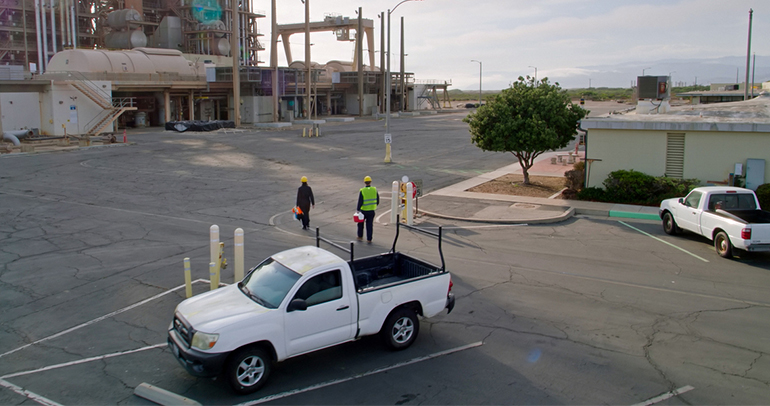
No other vehicle is as closely tied to American life as the pickup truck. First built for hauling goods across farms and job sites, it has become a mainstay in both commercial fleets and personal garages. Today’s classes 1–2a pickups—trucks with a gross vehicle weight rating of up to 8,500 pounds—are as likely to be outfitted with leather seats and advanced driver-assist features as they are to be hauling tools through a muddy construction site.
This mix of capability and comfort has helped pickups hold their place in the market for nearly a century, with models now accounting for close to 20% of all new vehicle sales nationwide.
In this mini-blog series, we explore the market forces shaping America’s classes 1–2a light-duty vehicles. In part 1, we look at the current state of the segment, from market leaders and evolving designs to changing use cases and the decline of small vans. In part 2, we turn to what’s ahead, covering emerging powertrains, new entrants and technology trends that will influence how OEMs, body builders and upfitters plan for the future.
From Its Origins to Everyday Utility: The American Pickup
The story began in 1925, when Ford introduced the Model T Runabout with a pickup body—America’s first factory-produced light-duty truck. Initially designed for agricultural and business use, pickups quickly proved their value beyond the work site, gaining popularity with everyday drivers. Nearly a century later, pickups remain one of the most visible and versatile vehicle types on US roads.
Used across the country for both commercial and personal purposes, classes 1–2a pickups are valued for their versatility and the image they project. On the work side, they can haul heavy loads, tow trailers and handle off-road terrain. On the lifestyle side, they have become high-value purchases, often configured with premium trims and amenities that rival those of luxury SUVs.
The Ford F-150 has been the best-selling vehicle in the US for decades, joined by GM’s Silverado and Sierra and Stellantis’ Ram 1500. According to Kelley Blue Book, in December 2024 the average pickup transaction price was $64,261—well above the market average. Many buyers are willing to invest in a vehicle that can handle weekday work and weekend recreation with equal ease.
Classes 1–2a Commercial Vehicle Use Cases
| Sector | Typical users | Primary use |
| Construction and general contracting | Contractors, builders | Hauling materials (lumber, drywall), small machinery, compressors, generators and tools across varied job sites; ideal where vans are impractical |
| Trades and field services | Electricians, plumbers, HVAC techs, telecom installers, pest control teams | Outfitted with toolboxes, racks and onboard power for mobile operations and service work |
| Landscaping and grounds maintenance | Landscaping crews, groundskeepers | Transporting soil, plants, mulch; towing mowers/trailers; sometimes used as snowplows for year-round tasks |
| Last-mile delivery and logistics | Delivery drivers, logistics providers | Compact for suburban areas, roomy enough for packages, appliances and food; supports e-commerce growth; vital for reducing high last-mile delivery costs |
| Utilities and municipal services | Public works, water/electric utilities, municipal fleet operators | Used for patrol, inspection, repair and maintenance; often customized with cranes, winches and other utility-specific outfitting |
| Utility, engineering and site inspection | Engineers, surveyors, inspectors | Transporting instruments, safety gear and equipment across undeveloped or rugged terrain; 4×4 models essential for traction and stability in field conditions |
How Leading Models Are Changing in Size, Design and Capability
In class 2a, the Ford F-150, Ram 1500 and GM Silverado 1500 and Sierra 1500 dominate. On the smaller end, the Toyota Tacoma, Ford Ranger, Chevy Colorado, GMC Canyon, Honda Ridgeline (which is also unibody) and newer unibody entries such as the Ford Maverick and Hyundai Santa Cruz have gained traction.
Modern pickups are larger than those from two decades ago, driven by consumer demand for status and comfort rather than more work capability. While bed sizes have changed little, today’s pickups offer more crew and extended cab options, taller ride heights and interiors equipped with advanced safety and comfort features.
For example, manufacturers have added built-in steps for easier bed access, multifunction tailgates and factory-installed bed liners and tie-down points. Comfort has improved as well, with larger infotainment screens, premium audio systems and better connectivity for work or travel. Many models also offer advanced safety options and driver-assist systems that make towing, parking and highway driving less demanding.
From Gas Power to Hybrids: What’s Driving Sales Now
Internal combustion engines (ICE) still power more than 90% of classes 1–2a pickups, according to our Commercial Vehicle Competitive Landscape Powertrain Build Plan. Low gas prices and proven durability make ICE the preferred choice for many buyers, especially for those towing or driving long distances. Manufacturers are continuing to invest in ICE efficiency, refining engines and transmissions for better performance and fuel economy, especially in the face of changing regulations. Diesel powertrains are available in limited applications in class 2a while being more widespread in class 2b.
Hybrids are gaining market share as a practical middle ground. The Ford Maverick Hybrid achieves up to 42 mpg in the city and the F-150 Hybrid sold over 73,000 units in 2024, according to our Powertrain Build Plan. Larger models such as the Ram 1500 Hybrid and Toyota Tundra Hybrid improve fuel efficiency and reduce emissions without sacrificing capability. GM plans to launch a plug-in hybrid Silverado in 2027.
Why Smaller Pickups Are Gaining Ground as Vans Disappear
Compact pickups such as the Toyota Tacoma, Chevy Colorado and Ford Maverick offer a smaller footprint with enough utility for many businesses. Unibody designs such as the Maverick, Santa Cruz and Ridgeline provide better ride comfort and fuel efficiency, appealing to buyers who don’t require heavy-duty capacity.
Small vans, once common in urban service fleets, have largely disappeared from the US market. Sales of the Ford Transit Connect ended after 2023 due to declining demand and global manufacturing changes, while production of the Ram ProMaster City ceased in 2022 after years of flat sales. Despite these hits, Ford’s Transit Connect continues to be sold in Europe, where compact vans remain a stronghold in the commercial segment. In addition, ProMaster might return in the future as an all-electric variant under Stellantis’ electrification plans.
For now, buyers are choosing pickups for their broader capability, higher resale value and adaptability to different jobs.
Coming Up: Strategies to Stay Ahead in the Changing Classes 1–2a Commercial Vehicle Market
Classes 1–2a pickups have evolved into vehicles that combine capability, comfort and advanced technology. As hybrids expand their role, the segment remains a core part of both work and lifestyle transportation in the US.
At the same time, while compact vans have seen a steady exit from the US market in recent years, they may not be gone for good. Automakers are exploring new purpose-built light van models, which could yet take their place alongside ever-popular pickups.
In part 2 of this series, we look ahead at the trends and technologies shaping the future of classes 1–2a light-duty vehicles, from advances in electric powertrains to new market entrants and connected vehicle capabilities.
If you need help navigating the classes 1–2a commercial vehicle market through the changing powertrain and regulatory landscape so you can plan with confidence, complete the form below to speak with one of our commercial vehicle and fleet experts.
Want to learn more? Let’s connect.









